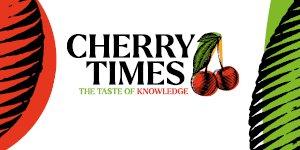THE MARKET FOR BLUEBERRIES
The blueberry market lends itself to being segmented according to consumer needs: like any other product, consumers have different preferences and expectations regarding the product and its characteristics. Segmentation therefore responds to the needs of consumers (who can buy a product that better meets their needs) and of manufacturers and distributors (who can differentiate themselves from competitors by responding more effectively to complex consumer needs),
MARKET SEGMENTATION IS THE SUBDIVISION OF THE MARKET INTO HOMOGENEOUS SUBSECTIONS OF CUSTOMERS, WHERE EACH SUBSECTION CAN BE PLAUSIBLY SELECTED AS A MARKET TARGET TO BE ACHIEVED WITH A DISTINCT MARKETING MIX.
Philip Kotler
The Italian consumer does not yet have the possibility to be fully satisfied in his needs in the case of the purchase of blueberries because in Italy the market of blueberries is not segmented.
SEGMENTATION
For example, the offer of oranges in the Italian retail trade has identified various segments such as oranges for consumption, oranges for juicing, oranges with or without leaves, oranges with untreated or with treated skin, organic oranges, premium oranges by size, variety or colour, oranges with guaranteed quality denomination (Arancia Rossa di Sicilia PGI).

For blueberries, on the other hand, the Italian retail trade generally offers no choice to the consumer: only one undifferentiated product line, only one price. Only in sporadic cases (e.g. Esselunga) do a standard and a premium line coexist in the same point of sale.
In order to validly represent an element of segmentation, certain characteristics are required:
- more than one segment on offer at the point of sale;
- clear elements of strategic identification of the segment (e.g. origin, quality, price);
- communication towards the consumer (packaging, brand, positioning in the point of sale).
It is therefore not a valid segmentation strategy to sporadically offer premium blueberries as the only reference in the category, or to fail to communicate to the consumer that he can have the choice between buying a domestically sourced and a foreign sourced blueberry .
REASONS FOR SEGMENTATION
It is likely that there is partial cannibalization between segments but if the segmentation is set correctly it must lead to an overall increase in sales.
For example, a consumer may stop buying blueberries standard and switch to the premium line without changing the quantities purchased, but there will be consumers who are attracted to a premium line and who did not previously buy blueberries.
HOW TO SEGMENT THE BLUEBERRY MARKET
In the most developed markets, blueberries are regularly segmented and the following categories are the most widely used:
- Standard
- Premium
- Discount
- Organic
- Local (national)
STANDARD
The Standard line is the basic line, on which the largest share of sales is concentrated. It is aimed at consumers who have no special needs and who consider blueberry to be an essentially undifferentiated product.
It is a product that does not offer any particular 'performance' but, being in the middle of the market, it manages to intercept a large share of consumers for whom 'the blueberries are blueberries' and who are not interested in other particular features.

The 125g pack is considered by Italian supermarkets and consumers as the "normal" pack for berries and this is where all the segmentation strategies of the blueberry market in Italy should start.
PREMIUM
The Premium segment is aimed at a consumer who is looking for a product with superior characteristics and who is willing to recognize an additional value compared to a standard product.
So for this segment to be sustainable, it must be priced higher than normal.
Normally in the blueberry segment the Premium is identified by the presence of superior characteristics in terms of minimum berry size or distinctive taste characteristics. In some cases both criteria are applied.

Segmentation by size requires the supplier to have a calibration line to ensure that each blueberry conforms to the minimum size.
Taste characteristics are normally associated with the variety, so some cultivars are considered Premium and others are not in the class even though they may be larger than normal.
Other characteristics that are evaluated are the crunchiness, the persistence of the bloom.
The characteristics that allow a blueberry to be classified as Premium are the subject of constant attention in the breeding programs. The research constantly produces new varieties that are improved in one or more aspects, including those that determine the possibility to include them in the Premium segment.
This determines that the level to enter this category tends to rise over time: while 14mm was considered a Premium size until a few years ago, now the minimum size for this category is considered 16mm.
CONTINUE...
This is the first in a series of articles on marketsegmentation of blueberries. If you don't want to miss the next ones, subscribe to the newsletter:
Download infochart "Blueberry Segmentation Chart" infochart












